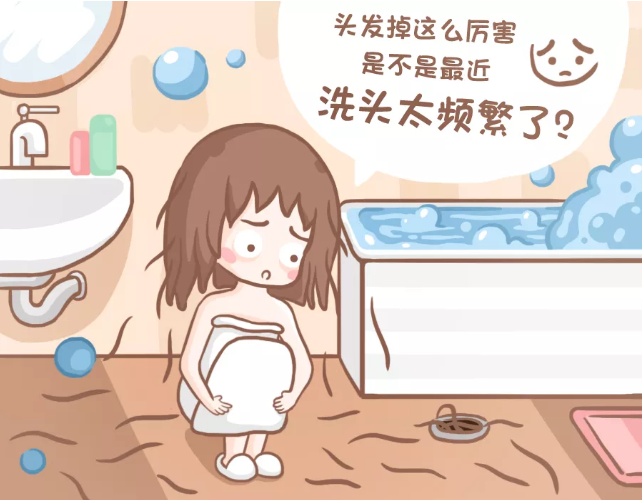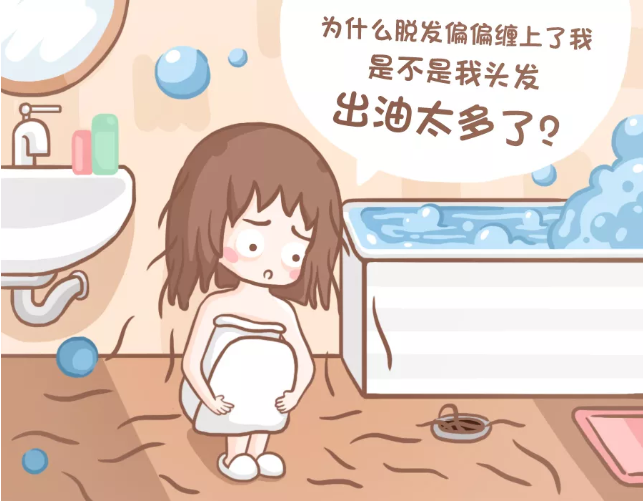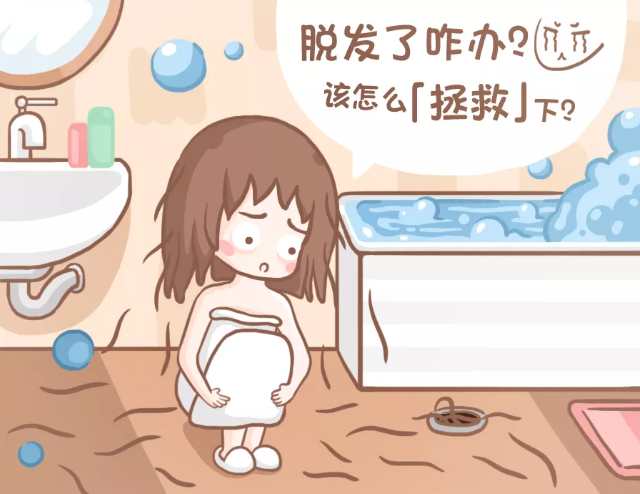
For young people with alopecia, shampooing is a very tangled thing.
Don’t wash your hair, it will be too oily. Wash it, looking at the hair all over the floor, I couldn’t help feeling tight and countless OS drifted across my heart.
Wash your head and lose a lot of hair. Is it alopecia?

Experts answer:
After washing my head, I found that I lost a lot of hair. Don’t panic. First judge whether it is alopecia or natural loss.
Normal people lose about 70-100 hairs on average every day. It is possible that these hairs fall off naturally after entering the rest period. Just like autumn leaves, they fall off at the touch.
As long as there is an equal amount of hair regeneration in the growing period, the amount of hair can reach a balance. Alopecia means that it loses more than it grows, just like a pool, with more water coming out than entering, and will dry up over time.
How to judge alopecia or hair loss, try [hair pulling test]: after washing the head, at least one day later (3 ~ 5 days is the best), gently hold a wisp of hair (40 ~ 60 pieces) from the root of the hair with orchid fingers and stroke it down the hair.
It is normal to fall off 1 ~ 2 roots, more than 3 roots have the possibility of alopecia, and more than 5 roots indicate serious alopecia and need medical treatment as soon as possible.
I lost my hair badly. Did I wash my hair too often?

Experts answer:
Hair loss, alopecia and shampoo are not necessarily related.
Shampoo is all those hair that is about to leave during the rest period. However, the use of inappropriate shampoo products is easy to cause scalp damage.
If you lose your hair, if you don’t wash your hair, your hair will still fall off…….
However, for oily hair, frequent shampoo is beneficial to reduce hair loss.
As for the frequency of shampooing, there is no strict standard. Oily hair can be washed every day. Dry and neutral hair needs to be washed more than 3 times a week. When the weather is hot and sweats more, it needs to be cleaned in time.
Why is hair loss haunting me? Is there too much oil in your hair?

Experts answer:
In modern society, young people [Yali Alexander] have irregular schedules and lack of exercise at home, which leads to alopecia becoming younger and younger. [1]
The most common type of alopecia is androgenic alopecia, also known as seborrheic alopecia (commonly known as [baldness]), which is a disease with genetic tendency and is more common in young and middle-aged men. [2]
Manifestations of this disease include:
Scalp sebum secretion increases and hair is greasy. The hair on both sides of the forehead is slender and sparse. The hairline moves backward and the forehead becomes higher and M-shaped. In severe cases, only occipital and temporal hair remains and becomes [Mediterranean]. However, the clinical manifestations of men and women will be somewhat different.
Other common types of alopecia include alopecia areata. Postpartum alopecia; Hairplucking fetishism; Nutritional alopecia; Infectious alopecia; Drug-induced alopecia; Cicatricial alopecia.
As to whether greasy hair will aggravate hair loss, in fact, there is no proved causal relationship between the two. On the contrary, friends of [male hair loss] will be accompanied by greasy scalp when hair loss occurs.
How to do alopecia?

Experts answer:
First of all, the cause of alopecia should be clearly defined. Some alopecia types mentioned above can be recovered only by removing inducing factors without any treatment, such as drug-induced alopecia, nutritional alopecia, postpartum alopecia, etc.
Androgenic alopecia, can take finasteride (only for men), spironolactone; Minoxidil for external use; Hair transplantation can also be used for treatment.
If you want to make your hair look fluffy and thicker in normal times, you can try these techniques:
Invisible perm; With hair wax; Shampoo and blow hair before going out; Wear a wig; Curl your hair with a curling iron, etc. You can also choose targeted washing and protection products.
